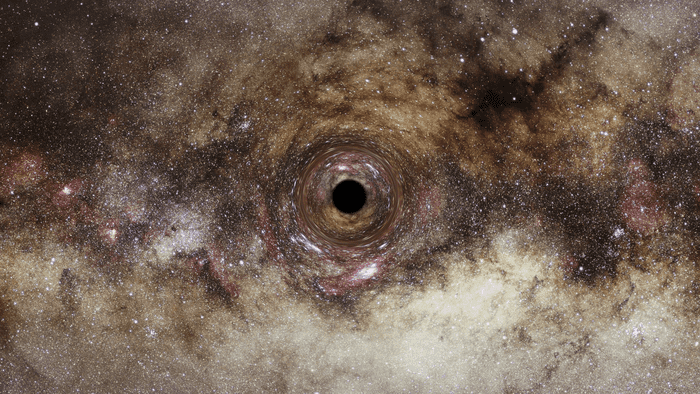
Astronomers have discovered what looks to be the largest black hole ever detected, a gargantuan anomaly in the fabric of space-time thought to be more than 30 billion times the mass of the sun. Black holes millions of times larger than the sun’s mass are known as supermassive black holes, but the newly identified object is in an entire class of its own, which is why some are now calling it an ‘ultramassive black hole’.
The black hole in question was discovered by astronomers at Durham University in the UK and Germany’s Max Planck Institute, who used a mix of gravitational lensing and computer simulations.
The great natural telescope of the cosmos
Gravitational lensing is a phenomenon that occurs when the gravitational force of a massive object, like a galaxy or a cluster of galaxies, bends the light coming from a more distant object, like a quasar or a galaxy behind it. In the process, the bending of light essentially enhances the image of the distant object, acting like a sort of cosmic magnifying glass.
Using this handy technique, astronomers were able to identify how light is bent by what looks like a huge black hole inside a faraway galaxy, even though it is separated from Earth by hundreds of millions of light-years. The black hole’s location and size were subsequently confirmed with supercomputer simulations of data captured by the sturdy Hubble Space Telescope.
When the scientists looked at the data, they could scarcely believe their eyes. The data encoded in the bent light suggests it passed by a black hole roughly 30 billion times the mass of the sun, which is around the upper limit of how large scientists believe black holes can theoretically grow. This discovery marks the first time a black hole has been found using gravitational lensing.
This wouldn’t have been possible had the ultramassive black hole not been inactive. In this inactive or dormant state, the black hole is not as voracious as an active black hole, and objects like stars and planets can orbit it provided they’re at a safe distance.
“Most of the biggest black holes that we know about are in an active state, where matter pulled in close to the black hole heats up and releases energy in the form of light, X-rays, and other radiation,” said Dr. James Nightingale, a physicist at Durham University.
“However, gravitational lensing makes it possible to study inactive black holes, something not currently possible in distant galaxies.
But now that this technique has been proven to work, the researchers believe many more will be discovered, some beyond our local universe, possibly revealing how these exotic objects evolved further back in cosmic time.
The findings appeared in the Monthly Notices of the Royal Astronomical Society.


